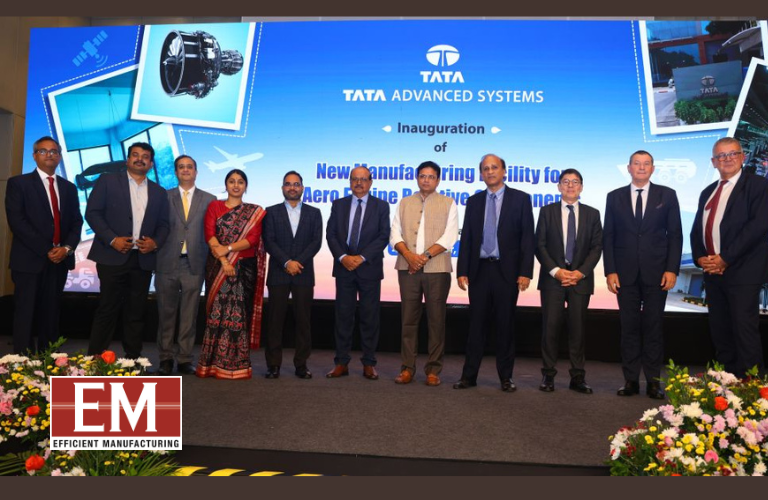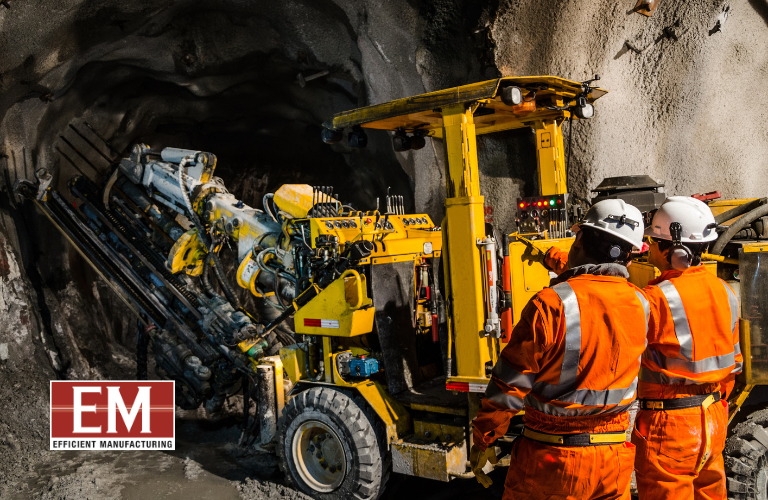| – Ajit Jangle, MD, FM Logistic India
Warehouse automation has lately emerged as a transformational force in the logistics business, revolutionising the storage, handling, and delivery of products. It simplifies operations, improves productivity, and decreases human error by leveraging cutting-edge technology and new automation solutions. Advanced robots, artificial intelligence, and IoT integration improve inventory management, order fulfillment, and real-time tracking. These innovations enable faster processing, higher accuracy, and considerable cost savings, resulting in increased overall production. As a consequence, firms may fulfil growing customer needs while maintaining a competitive advantage in an ever-changing market.
Warehouse automation involves applying advanced technology, software, and technology to automate repetitive, time-consuming, and labor-intensive processes that are traditionally handled by human workers. These responsibilities include receiving and storing inventory, sorting things, order picking, inventory tracking, palletizing, data input, packing goods, and delivering products. This strategic planning allows businesses to simplify processes, optimise workflows, save costs, improve accuracy and boost overall productivity. By adopting warehouse automation, businesses can stay more competitive in the fast-paced world of e-commerce and global trade.
To create a smart warehouse, we as logistics professionals must focus on new innovations and atomization, few of the key innovations in warehouse automation are as follows:
IoT- Enabled Systems
IoT technology enables the seamless integration of devices and systems within a warehouse, resulting in a real-time network that monitors and controls various processes. This interface enables exact inventory tracking, accurate location updates, and effective stock management. Furthermore, IoT sensors monitor equipment performance, offering insight into maintenance requirements and avoiding costly downtime. The device also contributes to the maintenance of appropriate environmental conditions, ensuring that delicate commodities are stored properly. By establishing a linked environment, IoT increases operational visibility, efficiency, and informed decision-making, eventually increasing productivity and lowering costs in warehouse management.
Augmented Reality and Virtual Reality (AR VR)
AR and VR are transforming warehouse training and operations. AR improves real-time engagement by superimposing digital information on the actual environment, guiding staff through complex picking procedures using step-by-step instructions and real-time data visualisation. This eliminates mistakes and speeds up onboarding. On the other hand, VR produces realistic simulations for thorough training, allowing workers to practice managing real-world circumstances in a safe, controlled setting. Furthermore, VR supports strategic planning by allowing managers to build and visualise warehouse layouts in a virtual environment prior to actual deployment. This foresight aids in optimising space utilisation, workflow efficiency, and safety standards while maintaining present operations. The use of AR and VR in warehouses not only improves training efficacy and operational precision, but it also saves time and money compared to traditional training techniques and physical trial and error in layout planning. This technology integration assures that the staff and infrastructure are well-prepared, efficient, and ready for the future.
Drones and Autonomous Vehicles
Drones can quickly navigate warehouse aisles, scan barcodes, and collect real-time inventory data, greatly improving inventory count accuracy and efficiency. Autonomous vehicles, such as self-driving forklifts and carts, improve warehouse logistics by decreasing manual labour and speeding up the picking and packaging procedures. Furthermore, these technologies help to site security by enabling continuous surveillance and monitoring, resulting in a safe and secure warehouse environment.
The integration of drones and autonomous vehicles will move warehouses into a future of enhanced efficiency, flexibility, and adaptability to market demands. Warehouses should expect lower operational costs, more efficiency, and a better capacity to adapt quickly to changing customer requirements, resulting in a more robust and competitive supply chain.
Automated Guided Vehicles
Automated Guided Vehicles (AGVs) are designed to minimise manual material handling in warehouses. They take over duties that were formerly handled by manual forklifts or carts including as changing loads, moving and stacking pallets, hauling heavy things, finishing assembly, and delivering huge amounts of products or commodities repeatedly. By automating these procedures, AGVs lower the risk of human errors, improve operational efficiency, and increase output. They also make a substantial contribution to workplace safety by removing personnel from potentially hazardous locations, such as those containing heavy machinery or harmful materials. This automation guarantees that materials are handled precisely and consistently, resulting in more efficient operations and fewer mishaps. Furthermore, AGVs can operate continuously without fatigue, further increasing the throughput and reliability of warehouse operations. As a result, AGVs play an important role in modernising warehouses, making them safer, more efficient, and more suited to the needs of modern supply chains.
Warehouse Management Systems & Warehouse Control System (WMS & WCS)
Warehouse management systems (WMS) and warehouse control systems (WCS) are increasingly integrated in order to optimise and streamline warehouse operations, allowing for seamless automation. The WMS is in charge of higher-level tasks including order management, inventory tracking, and workflow planning. It provides effective inventory allocation, order processing, and real-time data management while providing a macro-level overview of warehouse operations. In contrast, the WCS concentrates on the precise management and coordination of material handling equipment such as conveyors, sorters, and automated storage systems. It oversees the actual flow of commodities, assuring the smooth operation of machines and the timely completion of duties.
Warehouses get extensive insight and control over everyday operations by integrating WMS and WCS, from receiving inventory to dispatching items. This synergy improves operational efficiency by combining strategic planning with precision execution. Also, real-time data sharing across systems facilitates proactive decision-making, reduces bottlenecks, and increases accuracy. Ultimately, this integration results in simpler operations, lower operational costs, and increased productivity, allowing warehouses to better fulfil the needs of contemporary supply chains.
Pick-to-Light and Put-to-Light Systems
Pick-to-Light and Put-to-Light systems enhance warehouse efficiency by utilizing mobile barcode scanning devices synchronized with digital light displays. These systems direct warehouse pickers by providing a light signal to the exact locations where products put-away needs to be done or picked up, hence expediting the put-away and picking processes. This visual assistance reduces the amount of time spent wandering and looking for goods, which ideally speeds up operations in high-volume situations.
It also helps in minimising reliance on paper lists and spoken directions, these solutions reduce the possibility of human mistake, resulting in improved order fulfilment accuracy. Pick-to-Light systems highlight specific spots for item retrieval, whilst Put-to-Light systems indicate where goods should be deposited for sorting or shipment. The integration of these technologies not only optimises workflow, but it also increases productivity and accuracy, resulting in faster order processing and more customer satisfaction. As a result, Pick-to-Light and Put-to-Light systems are useful tools for warehouses that want to run their operations efficiently and accurately.
Voice Picking
Voice Picking, often known as pick-by-voice, transforms warehouse operations by directing employees using speech recognition software and mobile headsets. This system provides optimised pick pathways, guiding employees exactly where the products to be dropped & picked. Voice instructions allow workers to keep their hands and eyes free, removing the need for portable equipment like RF scanners. This hands-free technique improves safety and productivity by allowing pickers to focus only on their duties without the distraction of managing additional equipment.
The voice-directed solution streamlines workflow and minimises errors by providing workers with clear, audible directions in real time. It increases efficiency by reducing needless motions and ensuring that items are picked or placed appropriately. Furthermore, this technique responds quickly to changes in inventory and order priority, making it ideal for dynamic warehouse situations. Overall, Voice Picking and Tasking improves operational efficiency, accuracy, and worker safety, resulting in smoother, faster, and more reliable warehouse processes.
Conclusion
Automation in warehouse management has various advantages, including increased operating efficiency, accuracy, safety, inventory control, and cost-effectiveness. Implementing automated technologies like robots, conveyor belts, and Automated Guided Vehicles (AGVs) transforms warehouse operations. Robots automate repetitious operations, ensuring precision and reducing labour costs. AGVs improve material handling by transferring goods in an efficient and safe manner. These technologies collectively reduce human error, improve workflow, and create a safer work environment by removing workers from hazardous conditions. Additionally, automated inventory control systems offer real-time tracking and data analytics, optimizing stock management and order fulfilment processes.








